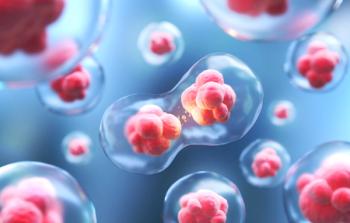
Black Women With Obesity, Elevated Leptin Levels at Higher Risk for Breast Cancer
The risk of early-onset breast cancer, particularly luminal A and triple-negative subtypes, was higher in Black women with obesity and high leptin levels compared with White women. This research highlights the urgent need for targeted interventions to address racial disparities in breast cancer outcomes.
Black women with obesity and high serum leptin levels were more likely to have an increased risk of early-onset
Obesity is a concern to physicians because it is known to increase or exacerbate the risk of multiple health problems. Additionally, Black women living in the US often have higher rates of obesity based on body mass index (BMI) compared with non-Hispanic White women. These racial disparities can be attributed to social, economic, psychological, and neighborhood factors, as well as increased risk of several diseases.
Patients with obesity experience a heightened risk of death, which can be caused by diabetes, heart disease, stroke, and certain subtypes of cancer.2 Black women in the US have the highest rates of obesity or are classified as overweight compared with other racial and ethnic groups, with data showing about 4 out of 5 Black women in the US are classified as overweight or obese.
"Breast cancer is the most commonly diagnosed cancer and the second leading cause of cancer-related death among US women," the study authors wrote.1 "It also exhibits significant race-associated health disparities. Although both Black and White women have nearly equal rates of breast cancer diagnosis, the incidence of breast cancer diagnosis in individuals younger than 45 years is higher among Black women."
Triple-negative breast cancer, which is an aggressive subtype, is also more prevalent among Black women.1 Moreover, Black women with HR-positive, ERBB2 breast cancer experience significantly worse survival outcomes.
Obesity and Early-Onset Breast Cancer in Black Women
In the retrospective cohort study, research investigated the link between obesity and early-onset breast cancer, particularly the triple-negative subtype, in Black women. Leptin levels were examined as a potential biological risk factor mediating this association.
Between October 2017 through March 2022, clinical records of patients were examined across 3 University of South Alabama Mitchell Cancer Institute clinics with geographic bounds concentrated in a single metropolitan area.
The study defined obesity based on the World Health Organization guidelines that refer to it as an excess fat accumulation posing a risk to health. A patient with a BMI of 30 or higher is considered to have obesity, between 25 and 30 is overweight, and less than 25 is average weight.
Researchers classified breast cancer cases into 4 subtypes, including luminal A, luminal B, ERBB2 enriched, and basal breast cancer or triple-negative breast cancer.
According to the National Cancer Institute, luminal A breast cancer is a subtype of HR-positive breast cancer where the cells have estrogen receptor and progesterone receptor proteins inside of them, and a small amount or none of a protein called HER2 on the surface.3 However, luminal B breast cancer is a subtype named after the genes the cancer cells express, also known as group 2 or HR-positive/HER2-positive breast cancer.4
Breast cancer subtype classified as ERBB2 enriched or HER2 is the amplification of human epidermal growth factor receptor 2.5 When ERBB2 is amplified or overexpressed, it becomes ERBB2-positive breast cancer. However, if the breast cancer lacks all these features, it is considered “triple-negative.”
Triple-negative and basal-like breast cancers share a lack of estrogen, progesterone, and HER2 receptors.6 However, basal-like cancers have unique protein markers and commonly present as invasive ductal carcinomas.
Leptin levels were utilized in the study as an adiposity biomarker because it is known as a biomarker of fat mass.1 The primary role of leptin is to regulate appetite and energy balance, but it can also influence several other biological processes, including carcinogenesis.
Participants were split into 3 separate categories regarding leptin levels. There was low, levels lower than the median level (< 21.9 ng/mL) in women without breast cancer. High was considered above the median level (> 44.1 ng/mL) in women with breast cancer. Lastly, moderate was defined as the levels between (21.9-44.1 ng/mL).
Luminal A and Triple-Negative Breast Cancers in Black vs White Women
There were a total of 1085 study patients, 30.6% of whom were Black with a median age of 58 years and 69.4% who were White with a median age of 63 years. Almost half of the population was classified as having obesity (46%). However, Black women with obesity experienced a higher frequency of breast cancer diagnosis compared with White patients (OR, 2.4; 95% CI, 1.87-3.15; P < .001).
Black women also had a higher incidence of early-onset disease (OR, 1.95; 95% CI, 1.33-2.86; P = .001) compared with White women, and this risk increased further among Black women with obesity (OR, 2.92; 95% CI, 1.35-6.22; P = .006).
There was higher risk of luminal A breast cancer in Black women with obesity (OR, 2.53; 95% CI, 1.81-3.56; P < .001), as well as a higher risk of triple-negative breast cancer (OR, 2.48; 95% CI, 1.43-4.22; P = .002) diagnosis compared with White patients.
Regardless of breast cancer diagnosis, Black women had higher serum leptin levels (median [IQR], 55.3 [40.3-66.2] ng/mL and 29.1 [21.1-46.5] ng/mL, respectively, P < .001) compared with White women (median [IQR], 55.3 [40.3-66.2] ng/mL and 29.1 [21.1-46.5] ng/mL, respectively) which was associated with higher odds of luminal A disease (OR, 5.25; 95% CI, 1.69-14.32, P = .003).
The study also found higher leptin levels associated with a greater likelihood of early-onset disease (OR, 3.5; 95% CI, 0.43-23.15; P = .33 for trend) and triple-negative breast cancer diagnosis (OR, 6; 95% CI, 0.83-37.27; P = .14 for trend), but these outcomes were statistically insignificant.
Study limitations included its small, single-institution sample size, which was further restricted due to incomplete breast cancer subtype data, particularly for patients before 2017, because of electronic medical record changes. Additionally, the study relied on self-reported race, potentially introducing bias.
Based on the study findings, both obesity and higher leptin levels increased the risk of early-onset breast cancer diagnosis, as well as the risk of diagnosis with luminal A and triple-negative subtypes, and a higher risk among Black women. Future studies should consider race-associated risk factors like social exposures, economic and psychological stressors that promote obesity rates in Black women that may have a broader effect on human biology. Research can create a better understanding of the underlying causes of breast cancer racial disparities and help shape community-based approaches to diminish the existing disparity gaps.
References
1. Sudan SK, Sharma A, Vikramdeo KS, et al. Obesity and early-onset breast cancer and specific molecular subtype diagnosis in black and white women: NIMHD social epigenomics program. JAMA Netw Open. 2024;7(7):e2421846. doi:10.1001/jamanetworkopen.2024.21846
2. Obesity and African Americans. Office of Minority Health. 2022. Accessed July 30, 2024.
3. Luminal A breast cancer. National Cancer Institute. February 2, 2011. Accessed July 30, 2024.
4. Luminal B breast cancer. Cancer Treatment Centers of America. October 18, 2022. Accessed July 30, 2024.
5. Idossa D, Borrero M, Blaes A. ERBB2-low (also known as HER2-low) breast cancer. JAMA Oncol. 2023;9(4):576. doi:10.1001/jamaoncol.2022.6889
6. Lee S. Triple-negative and basal-like breast cancers. Canadian Cancer Society. 2014. Accessed July 30, 2024.
Newsletter
Stay ahead of policy, cost, and value—subscribe to AJMC for expert insights at the intersection of clinical care and health economics.














































